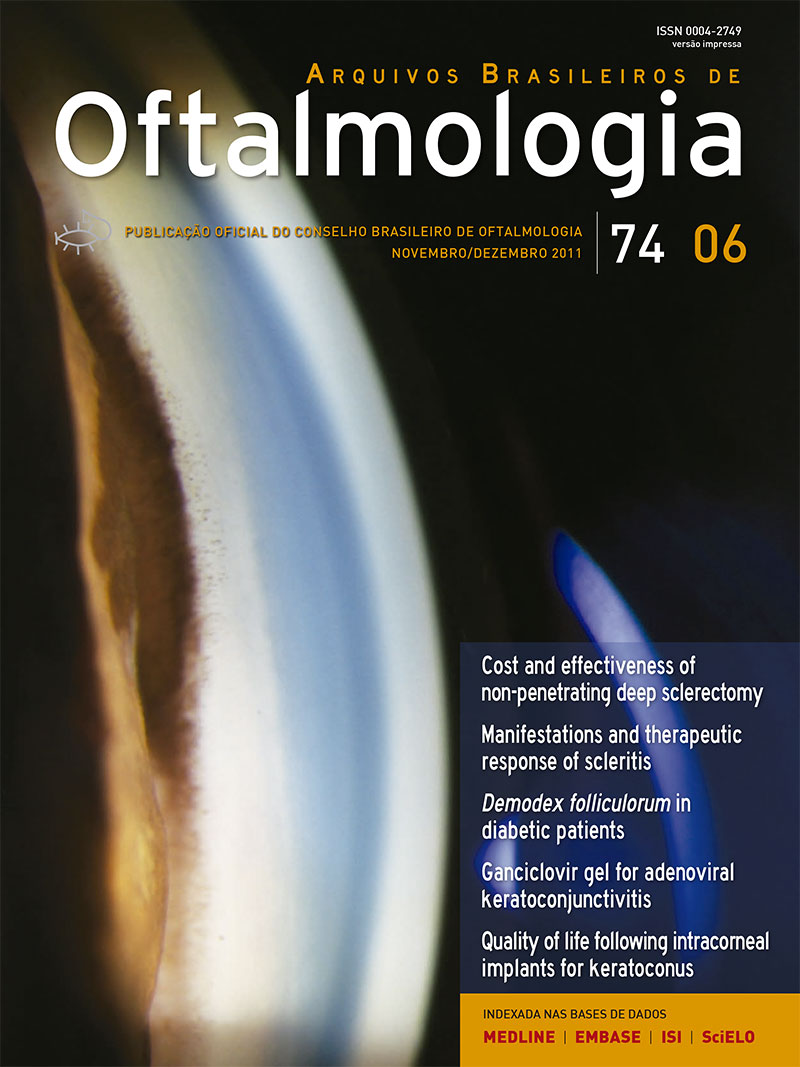INTRODUCTION: Scleritis is a rare, progressive and serious disease, the signs of which are inflammation and edema of episcleral and scleral tissues and is greatly associated with systemic rheumatoid diseases. PURPOSE: To perform a prospective and comparative study between ophthalmologic manifestations, serologic findings and therapeutic response of patients with isolated scleritis and scleritis associated with systemic rheumatoid disease. METHODS: Thirty-two outpatients with non-infectious scleritis were studied, from March 2006 to March 2008. The treatment was corticoid eye drops associated with anti-inflammatory agents, followed by systemic corticoids and immunosuppressive drugs if necessary, was considered successful after six months without scleritis recurrence. RESULTS: Fourteen of 32 patients had scleritis associated with systemic rheumatoid disease, of which nine had rheumatoid arthritis, two systemic lupus erythematosus, one Crohn's disease, one Behçet's disease and one gout. There were no difference in relation to involvement and ocular complications, there was predominance of nodular anterior scleritis and scleral thinning was the most frequent complication. The scleritis associated with systemic rheumatoid disease group had 64.3% of autoantibodies, versus 27.8% among those with isolated scleritis and this difference was statistically significant. In the isolated scleritis group 16.7% used anti-inflammatory, 33.3% corticosteroids, 27.8% corticosteroids with one immunosuppressive drug, 5.5% two immunosuppressive drugs, 16.7% corticosteroids with two immunosuppressive drugs and 33.3% pulse of immunosuppressive drugs, there was remission in 88.9%. In the scleritis associated with systemic rheumatoid disease group 7.1% used anti-inflammatory, 7.1% corticosteroids, 50% corticosteroids with one immunosuppressive drug, 7.1% two immunosuppressive drugs and 22.2% pulse of immunosuppressive drugs, 100% had treatment success. CONCLUSION: Prevalence of unilateral nodular scleritis was noted in both groups and higher rates of all the parameters tested were noted in the scleritis associated with systemic rheumatoid disease group. There were no differences between the groups with respect to the use of immunosuppressive drugs and therapeutic response, which was fully satisfactory in the scleritis associated with systemic rheumatoid disease group and satisfactory in the isolated scleritis group.
Keywords: Scleritis; Rheumatic diseases; Autoantibodies; Inflammation; Immunosuppressive agents
